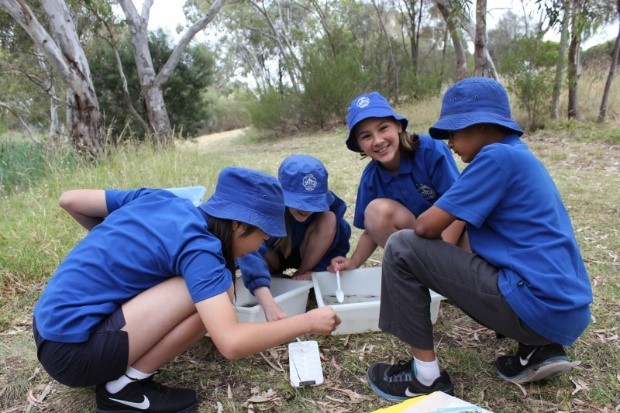Annual Achievements Reports
The Annual Achievements Report for this year shines a spotlight on the efforts of local communities throughout Victoria over the past year, while also paying tribute to the remarkable 30-year legacy of community-driven environmental stewardship across the state. As of 2024, Victoria proudly stands at the forefront of environmental preservation with its enduring WaterWatch and EstuaryWatch programs, symbolizing three decades of unwavering commitment to safeguarding our natural resources.
2023-2024 EstuaryWatch Waterwatch Annual Achievements Report
Previous Reports
Annual Achievements Report 2022-23
Annual Achievements Report 2021-22
Annual Achievements Report 2020-21
Annual Achievements Report 2019-20
- Corangamite Regional Report
- Glenelg Hopkins Regional Report
- Goulburn Broken Regional Report
- East Gippsland Regional Report
- North East Regional Report
- West Gippsland Regional Report
- Mallee Regional Report
- Wimmera Regional Report
- Melbourne Regional Report
- North Central Regional Report
Annual Achievements Report 2018-19
Annual Achievements Report 2017-18
Annual Achievements Report 2016-17
Annual Achievements Report 2015-16
Annual Achievements Report 2014-15
Waterwatch case studies
National Waterbug Blitz!
Each year, Australians are encouraged to become ‘citizen scientists’ and investigate how healthy their local waterways and wetlands are, simply by exploring and identifying what macroinvertebrates they contain. The type and number of macroinvertebrates found in a waterway can tell us a lot about how healthy that waterway is.
Waterbug experts John Gooderham and Cecil Ellis imparted their knowledge in 60 Waterbug Blitz training sessions run across the country, involving over 750 participants with 500 being Agreed Level Taxonomy (ALT) accredited. In developing a valuable set of training and education resources, the National Waterbug Blitz approach is now part of the national school curriculum with all resources available on the National Waterbug Blitz website.
There are nearly 2000 active Waterbug App users in many geographical areas, from Western Australia to urban Melbourne to Tasmania’s Tarkine wilderness. Importantly, the waterbug data generated by the app incorporates 60 per cent of Australia’s Natural Resource Management regions. The National Waterbug Blitz has effectively combined waterbug data from all states and territories, making it the first nationwide freshwater reporting system based on both community and professional data.
For more information visit www.waterbugblitz.org.au/.
River Detectives
With 69 Victorian schools participating in the 2019 River Detectives program, around 2,600 young people were engaged as citizen scientists, inspiring a new legion of future stewards of the environment.
Since 2017, the River Detectives program has targeted schools across the state, including in the North Central, Wimmera, North East and Corangamite CMA regions and through Melbourne Water. The River Detectives program continues to strive to offer professional learning opportunities, water science and macroinvertebrate monitoring kits, and an online platform for classroom resources and data capture.
Teachers and volunteer educators are trained to become River Detectives Educators by Waterwatch program facilitators. In turn, River Detectives Educators support school students to observe and learn about catchment and waterway health, and to actively monitor the habitat, water quality and macroinvertebrates of their local waterway.
Importantly, the data collected by student citizen scientists is entered into the River Detectives portal and contributes to the Victorian Waterwatch database. Programs that include hands-on, real-life science activities undoubtedly connect students to nature and help to pique their interest in environmental conservation.
For more information visit www.riverdetectives.net.au.

This report capture stories from the regions and provide examples of how the two programs are informing waterway management and increasing community knowledge and skills on how to monitor their local waterway. Learn more in the Annual Achievements Report.

.png)
.jpg)
.jpg)
